Innovations in Food Analysis — Analysis of Peptides, Additives and Flavours
The Application Notebook
The analysis of peptides and additives using a new HPLC innovative column technology, Pathfinder, was shown. For the analysis of flavours in lemon juice GC–MS with a new MS library, FFNSC, with linear retention indices was used.
Introduction
Analysis of food products is a challenging task. Many compounds with different properties need to be analysed. Chromatographic techniques are widely used in this field because of their excellent sensitivity and separation efficiency. In this application note the use of liquid and gas chromatography for the analysis of different groups of compounds such as peptides, additives and flavours is demonstrated.
Analysis of Peptides with RPLC
Reversed-phase chromatography (RPLC) is a widely used separation mode for the analysis and purification of biologic materials. Within the group of biomolecules, RPLC is commonly used for the separation of synthetic and natural peptides. Peptides are naturally present in foodstuffs as degradation products of proteins or as additives such as flavour enhancers.
RPLC is the most commonly chosen separation mode because of its high resolution. With RPLC it is possible to resolve peptides which differ only through one amino acid. The role of RPLC for peptide analysis has been reviewed in several scientific articles.1,2
RPLC with Pathfinder Technology
With Pathfinder technology a new generation reversed-phase support is introduced. The polymer encapsulated technology combines the advantages of both polymer-based columns and silica based columns.3 The aim of the present application note is to demonstrate the separation performance for peptides with Pathfinder technology. For this study a set of five peptides was selected differing in pl value, molecular weight and hydrophobicity.
Instrumentation
Shimadzu Prominence HPLC system with LC-20AD binary pump, SIL-20AC autosampler and CTO-20AC oven. LCsolution software with CBM-20A. LCQ Deca XP Ion trap mass spectrometer (Thermo Finnigan) with Xcalibur software. Column: Pathfinder MR; dimensions: 2.1 mm × 150 mm; particle size: 3.5 µm; pore size: 100 Å.
Results
A test mixture containing five peptides was formulated as a model for the overall range of peptides observed in real life samples.4
Figure 1 shows the base peak chromatogram of the peptide mixture. A short isocratic period was applied at the start to retain the highly polar peptides. After 5 min a linear gradient was executed, increasing in 5 min from 10% modifier up to 50% modifier. This resulted in a baseline separation of all peptides with good shaped peaks.
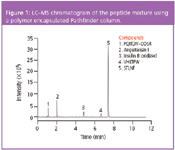
Figure 1
Polypetides can sometimes be too large to permeate into the pores of the particles. This size exclusion effect can lead to deteriorated peaks. No evidence for size exclusion effects were observed for any of the peptides in the present study.
Analysis of Preservatives, Antioxidants and Sweeteners by RPLC
Preservatives are chemical compounds that prevent activity and growth of microorganisms after manufacturing of food products. These products are added to prolong the shelf life time. Benzoic acid and sorbic acid are the most frequent preservatives used for food and beverages. Antioxidants, such as ascorbic acid, are added to beverages to prevent them from deterioration through oxidation reactions. Colour changes of beverages are the best known effect of oxidation reactions. Sweeteners are one of the most important additives for humans that affect the taste of foodstuffs. Sweeteners are widely used in food, beverages and the pharmaceutical industry.
Instrumentation
The HPLC instrument used was an LC-2010 provided with degassing unit, a low pressure gradient pump for solvent delivery, pre-heater and UV detector with a standard flowcell. Column: Pathfinder MR; dimensions: 4.6 mm × 150 mm.
Result
The method described is a simple and rapid assay for quality control of several additives in one run (Figure 2).
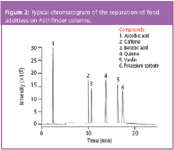
Figure 2
Analysis of Flavours with GC–MS
Flavour compounds are often highly volatile components. The method of gas chromatography is the method of choice for their analysis. Identification of a flavour compound is performed via comparison with commercially available mass spectral libraries. However, in particular with natural compounds the spectra in such databases can differ based on the purity of the compound used in the database.
FFNSC (Flavours and Fragrances Natural and Synthetic Compounds) Library
In this study a new MS library, the FFNSC (Flavours and Fragrances Natural and Synthetic Compounds) was used for the identification of flavours in lemon juice.
The spectra of the FFNSC were obtained by injecting pure standards only of the flavours and fragrances. In addition to the mass spectra the linear retention indices of all compounds were also added to the database. This even enables the identification of compounds (e.g., isomers, showing very similar mass spectra). In the GCMSsolution software the LRI values of an unknown sample can be calculated simply by one injection of a hydrocarbon standard. So in the library search routine the LRI value of a compound is also taken into account for the final result.
Instrumentation
A Shimadzu GCMS-QP2010 with AOC-5000 autosampler and GCMSsolution software with FFNSC library was used in this study.
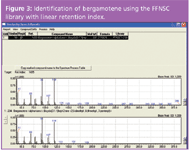
Figure 3
Results
Figure 3 shows the identification of bergamotene in hyssop oil (Figure 4) using the FFNSC library. Because of the use of mass spectrum and additionally the linear retention index search, only one compound in the hit list was obtained.
Conclusions
Chromatographic methods are excellent tools for the analysis of food compounds. In this study the analysis of peptides and additives using RPLC and a new innovative column technology, Pathfinder, was shown. The Pathfinder columns showed excellent separation efficiency. For the analysis of flavours in lemon juice GC–MS was used. Identification of the compounds was performed using the new FFNSC library (Flavours and Fragrances Natural and Synthetic Compounds) which contains in addition to the mass spectra the linear retention indices of all compounds. Using the LRI, identification of the bergamotene was precise.
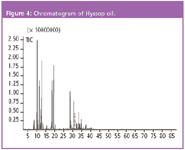
Figure 4
References
1. Y. Shi et al., J. Chromatogr. A, 1053, 27–36 (2004).
2. E. P. Romijn, J. Krijgsveld and A. J. R. Heck, J. Chromatogr. A, 1000, 589–608 (2003).
3. H. Engelhardt et al., Chromatographia, 27, 535–543 (1989).
4. C.A. Browne, H.P. Bennett and S. Solomon, Anal. Biochem., 124(1) (1982).

Shimadzu Europa GmbH
Albert-Hahn-Strasse 6–10
D-47269 Duisburg, Germany
tel. +49 203 7687 0, fax +49 203 766625
e-mail: shimadzu@shimadzu.de
website: www.shimadzu.de
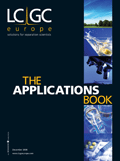
Analytical Challenges in Measuring Migration from Food Contact Materials
November 2nd 2015Food contact materials contain low molecular weight additives and processing aids which can migrate into foods leading to trace levels of contamination. Food safety is ensured through regulations, comprising compositional controls and migration limits, which present a significant analytical challenge to the food industry to ensure compliance and demonstrate due diligence. Of the various analytical approaches, LC-MS/MS has proved to be an essential tool in monitoring migration of target compounds into foods, and more sophisticated approaches such as LC-high resolution MS (Orbitrap) are being increasingly used for untargeted analysis to monitor non-intentionally added substances. This podcast will provide an overview to this area, illustrated with various applications showing current approaches being employed.

.png&w=3840&q=75)

.png&w=3840&q=75)



.png&w=3840&q=75)



.png&w=3840&q=75)









